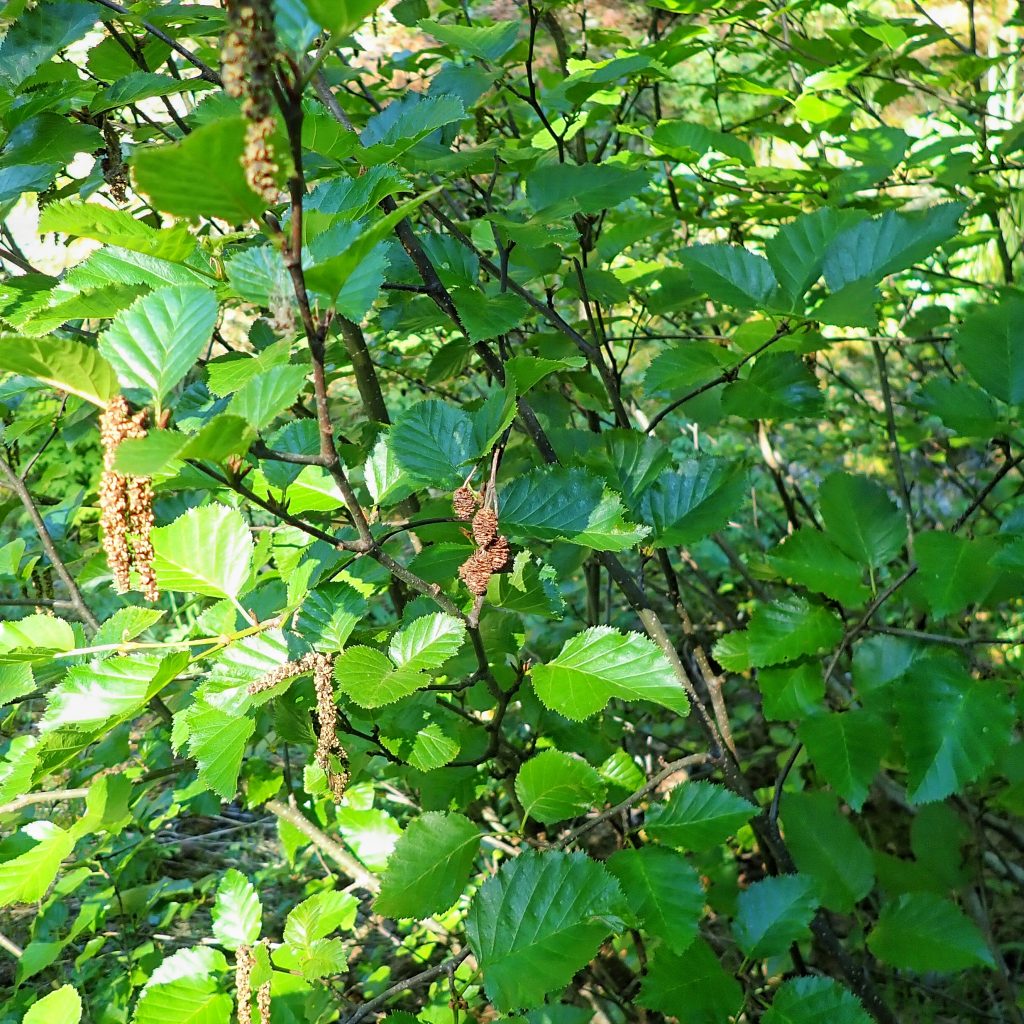
First off, I apologize to anyone who wondered what happened to me for the past 2 weeks. I have been working on a presentation that I did on Monday for the Scarab Society, and it has a been rather an all consuming task. I recently shared it as a blog on this site under the title ‘Evolution of a recreational naturalist’.
Many books and online resources still call this member of the family Betulaceae (birches) Alnus viridis (Green Alder) but by virtue of having been published 2 years earlier the specific epithet alnobetula has priority (as discussed here), and the Green Alder is more properly known as Alnus alnobetula fruticosa, which Oregon Flora vol. 2 says is absent from at least that state, though the 2nd edition of Flora of the Pacific Northwest claims it is found in our region (although that treatment continues to call it Alnus viridis fruticosa). Sitka Alder also can be found listed as Alnus sinuata in older texts.
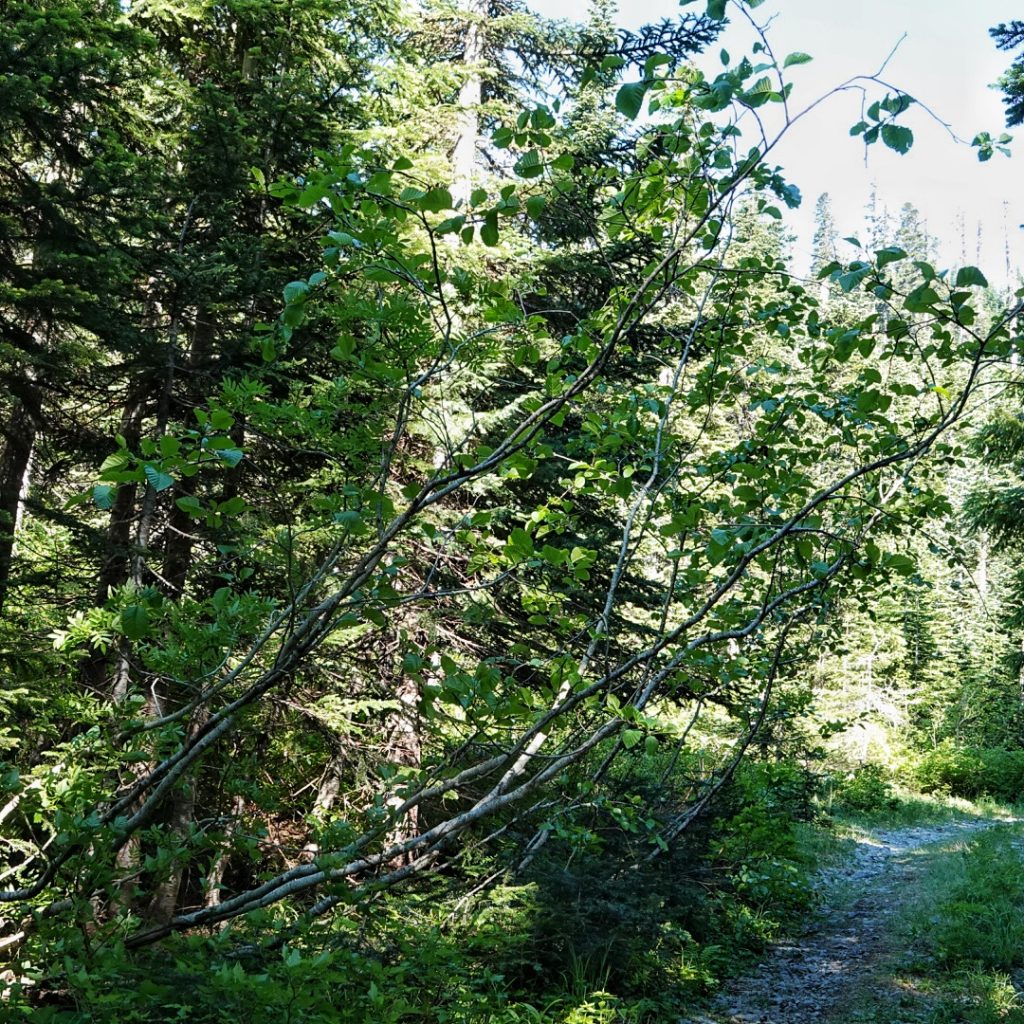
Regardless of what it is called this is an interesting, handsome, and gracefully semi-sprawling large shrub of moist, mostly montane regions, and I was unaware of its identity until Craig Sondergaard pointed it out on our 4th of July camping trip. Besides its spreading and non-erect form the thing I noticed that was the most different from the familiar Red Alder (A. rubra) was how sticky the leaf surfaces and cones are.

Alnus alnobetula sinuata is a preferred restoration plant in wetlands, as well as in mine tailings and other nutrient poor sites, because it has a symbiotic relationship with nitrogen fixing bacteria in the soil, provides stability and slows erosion of slopes, and, being lower growing than many other alders, it doesn’t ‘shade out’ recolonizing conifers, as well as for its many wildlife benefits.
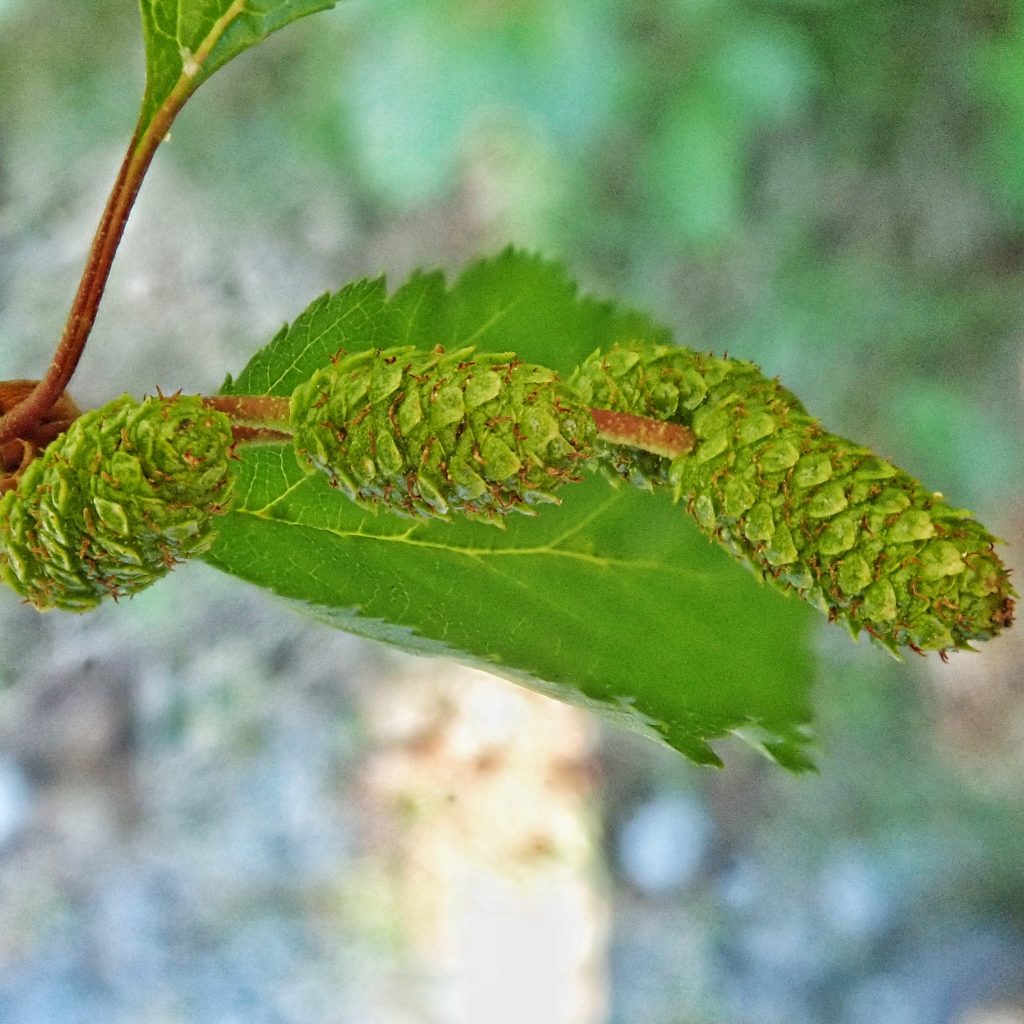
Indigenous peoples did not find many uses for Sitka alder as a food source, but the catkins, though bitter, can be eaten cooked or raw, and the young buds are also edible, and somewhat more palatable. But they did find a variety of medicinal purposes for this plant. The bark was prepared and used for skin problems, and an infusion of the bark was used to treat poison oak. The cones and bark were used for general medicinal purposes, for stomach ailments or as a tonic, and the male catkins were used to treat gonorrhea. The inner bark was also used as part of a smoking mixture, usually with Arctostaphylos leaves. The bark was used as a red dye for wool and leather, spoons were made from the wood, and it was, along with other alders, a preferred wood for smoking fish and game.
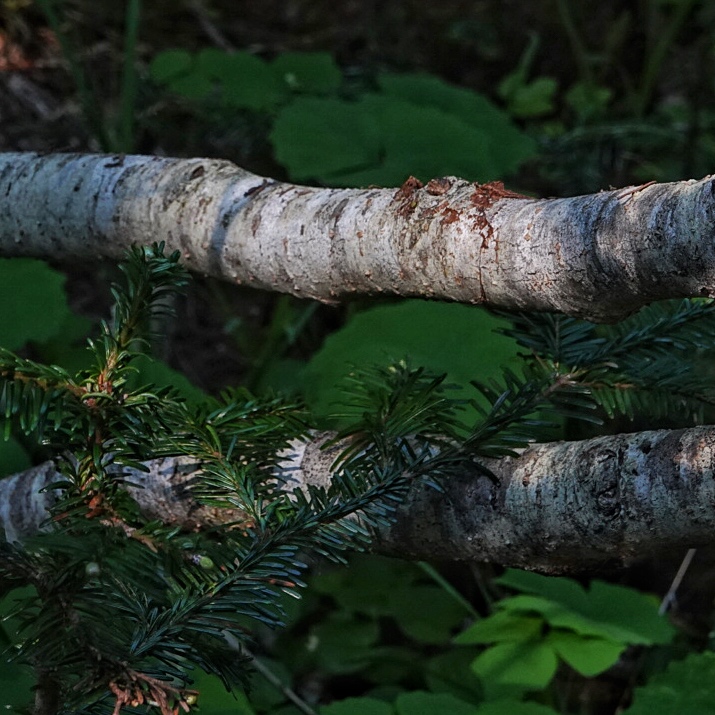
Description-Tree or large (up to 25’ tall) shrub with multiple branching trunks; bark is yellowish brown to gray, usually with at least some white lichen patches; leaves green on top and only slightly paler below, wavy, with twice serrate margins that are not revolute (rolled under); catkins emerge and flower after the branches are in leaf; male catkins are long and thin and often bunched, female cones are small and become egg-shaped.
Similar species-All other Alnus spp. In our region have catkins that develop and flower before the leaves come out, and the leaves are much paler underneath than on top; Alnus rubra is almost never shrubby, even when young, and the leaf margins are revolute.
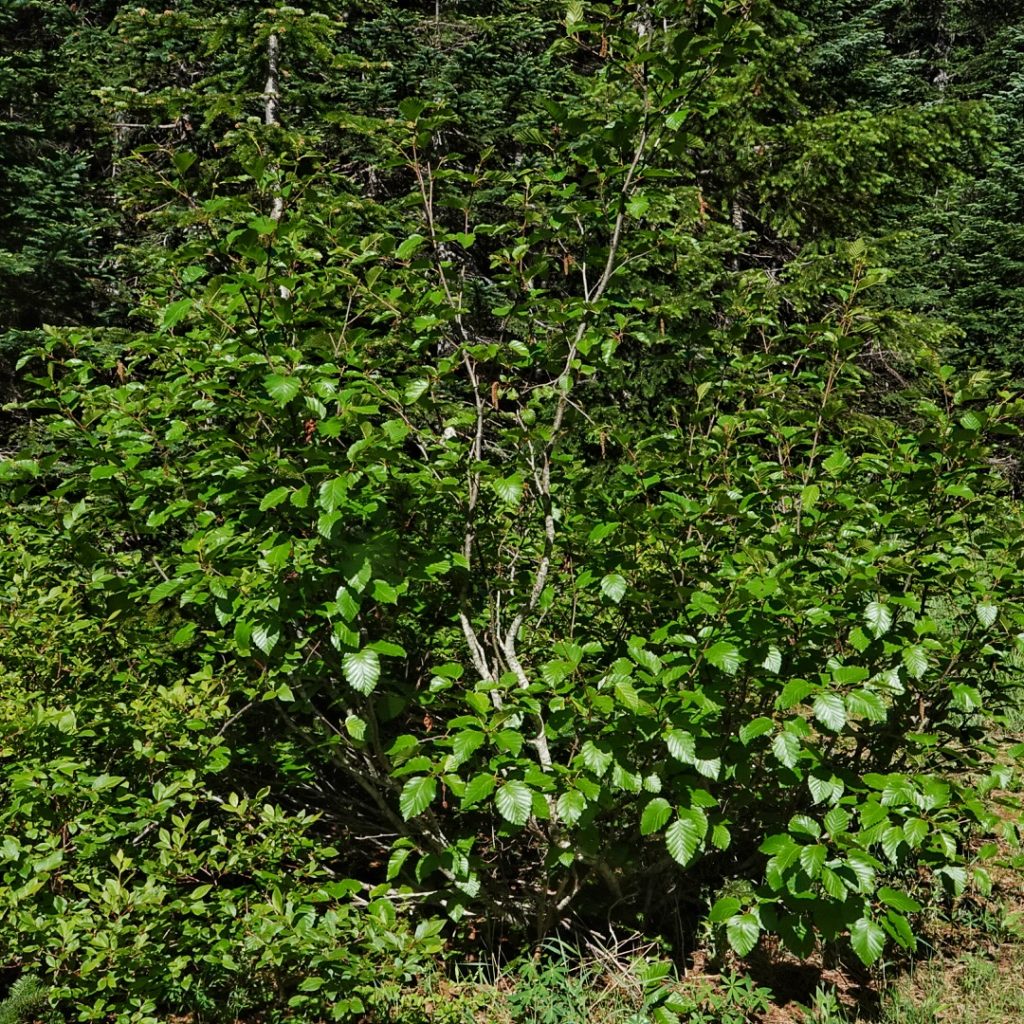
Habitat– Moist open areas from low elevations to subalpine, but most common in our region in montane regions.
Range-Our subspecies is only found in northwestern North America, but the species as a whole is Holarctic; found in our region in the Coast Range (down to low elevations on the west side of the Coast Range), Cascades, Rocky Mountains and it’s foothills, Blues, Wallowas, and Ochocos
Reproductive timing-May through July
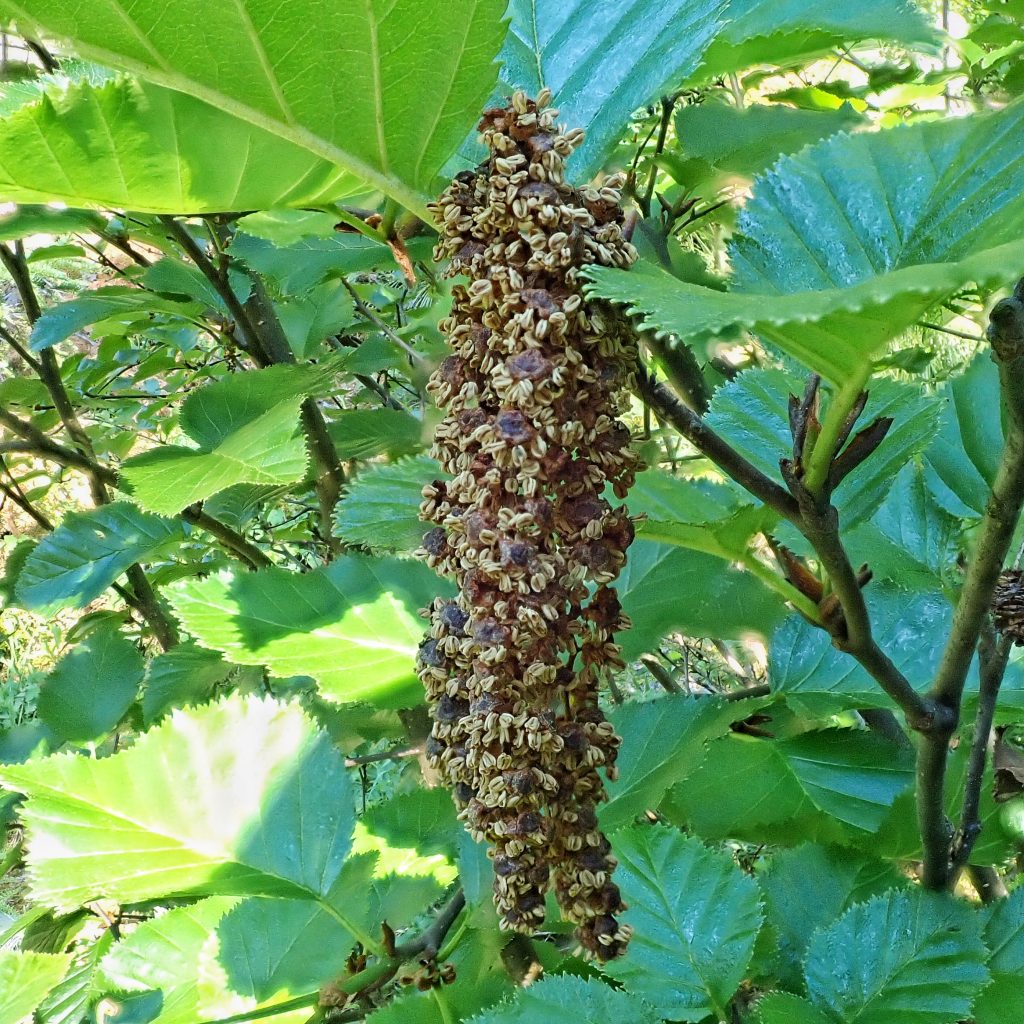
Eaten by-Some members of the leaf mining moths in the genera Stigmella, Coptodisca, and Coleophora, the larvae of the leaf weevil Isochnus goniophallus, and possibly the leaf mining fly Agromyza alnivora, (although this species has not been confirmed from our region) are among the many leaf miners to utilize this species; the leaves are also utilized as a larval host by the moths Drepana arcuata, Rheumaptera subhastata, Dysstroma citrata, Echlaena tigrinaria, Phyllodesma americana, Acronicta grisea, Dasychira vagans, and Lithophane petulca, amongst many others, and the butterflies Papilio rutulus, P. eurymedon, Polygonia oreas, P. faunus, and Nymphalis antiopa; it is probably also used by alder flea beetle (Altica ambiens) larvae and adults, although I can find nothing specific for Sitka alder; moose will feed extensively on this plant, elk browse young shoots, deer, muskrats, rabbits, snowshoe hares, and squirrels will eat the leaves and twigs, and beaver eat the bark and use the wood for dam construction; numerous birds eat the catkins, seeds, and buds in wintertime, and various insects feed on the pollen.
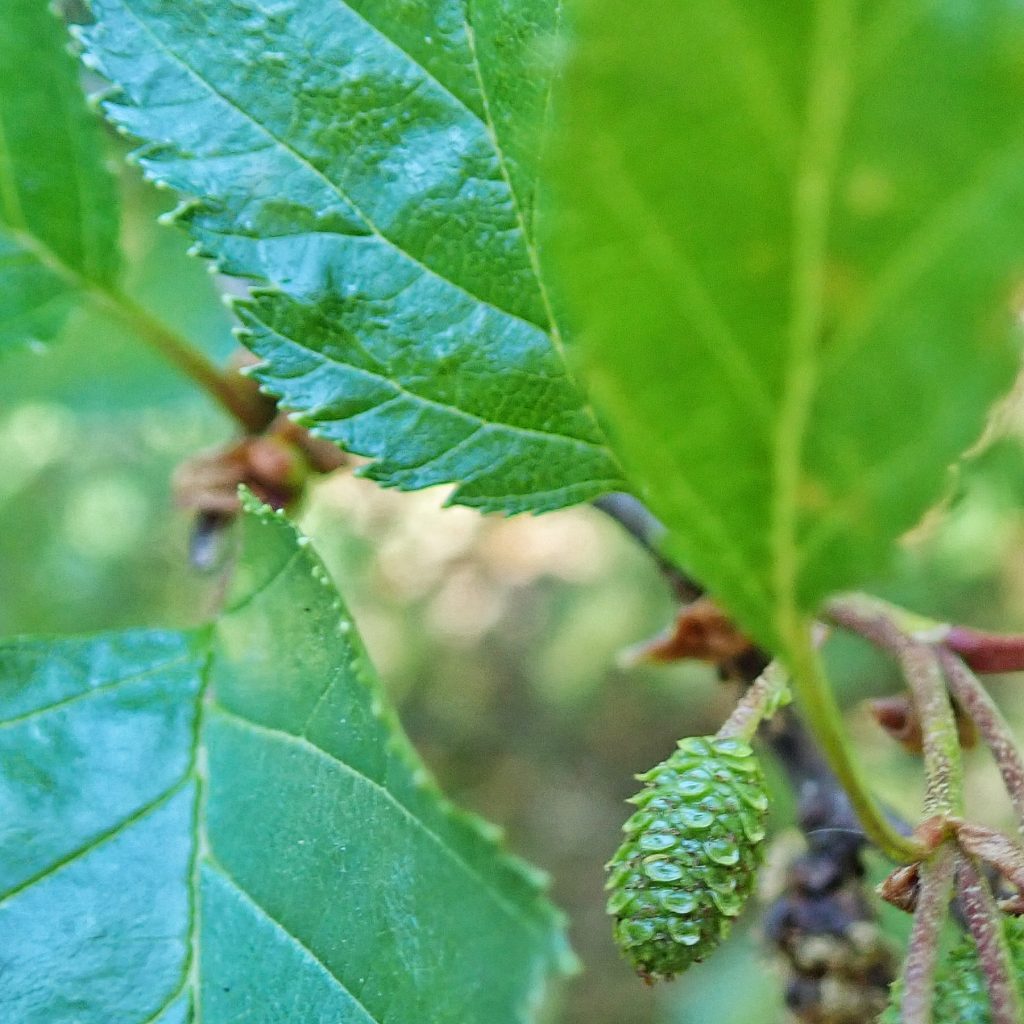
Etymology of names–Alnus is an ancient Latin name for the alders. The specific epithet alnobetula is a combination of the Latin words for alder and birch, and implies that someone thought this taxa was intermediate between the two genera. The subspecies epithet sinuata is from the Latin for ‘bend’, and refers to the waviness of the leaves.
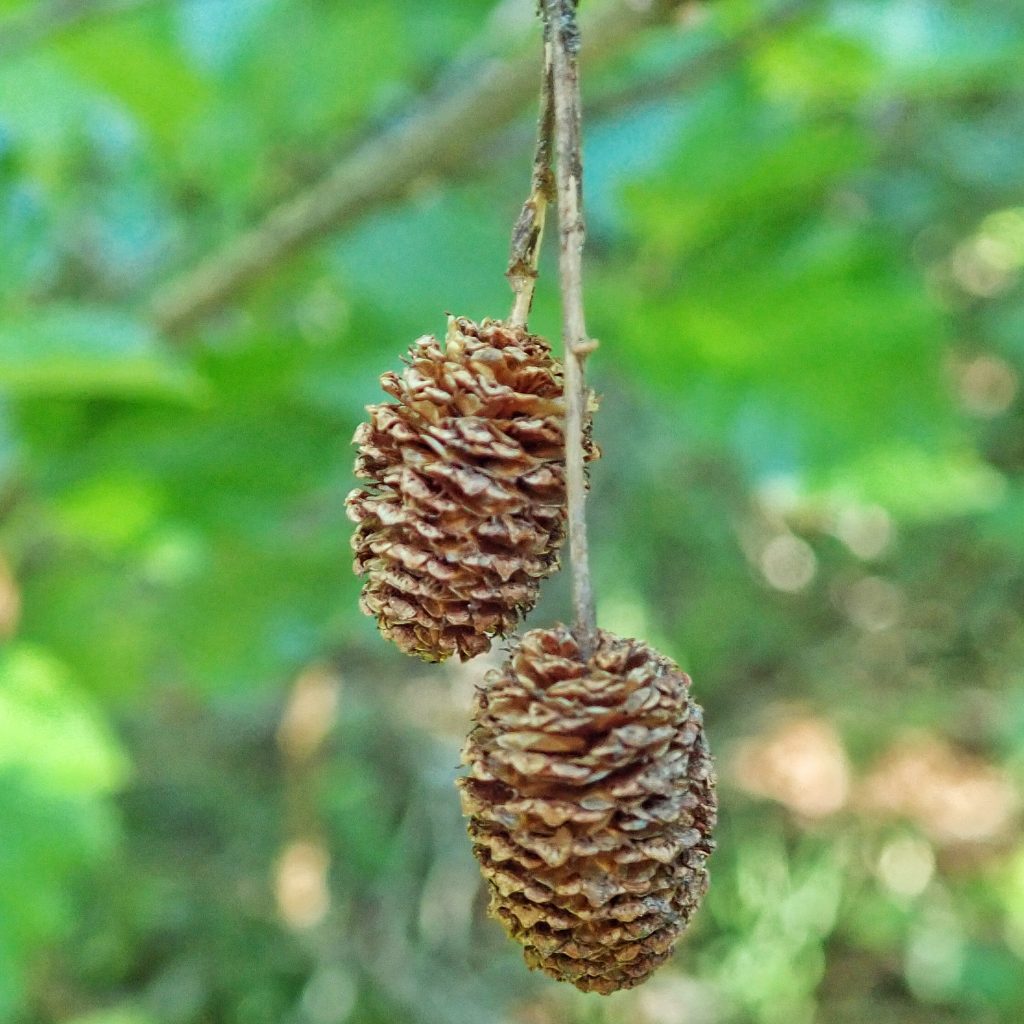
OregonFlora Alnus alnobetula ssp. sinuata
https://www.centralcoastbiodiversity.org/sitka-alder-bull-alnus-viridis-ssp-sinuata.html
https://www.nrcs.usda.gov/Internet/FSE_PLANTMATERIALS/publications/orpmcpg10665.pdf
https://www.wildflower.org/plants/result.php?id_plant=ALVIS
https://www.ncbi.nlm.nih.gov/pmc/articles/PMC4611743/
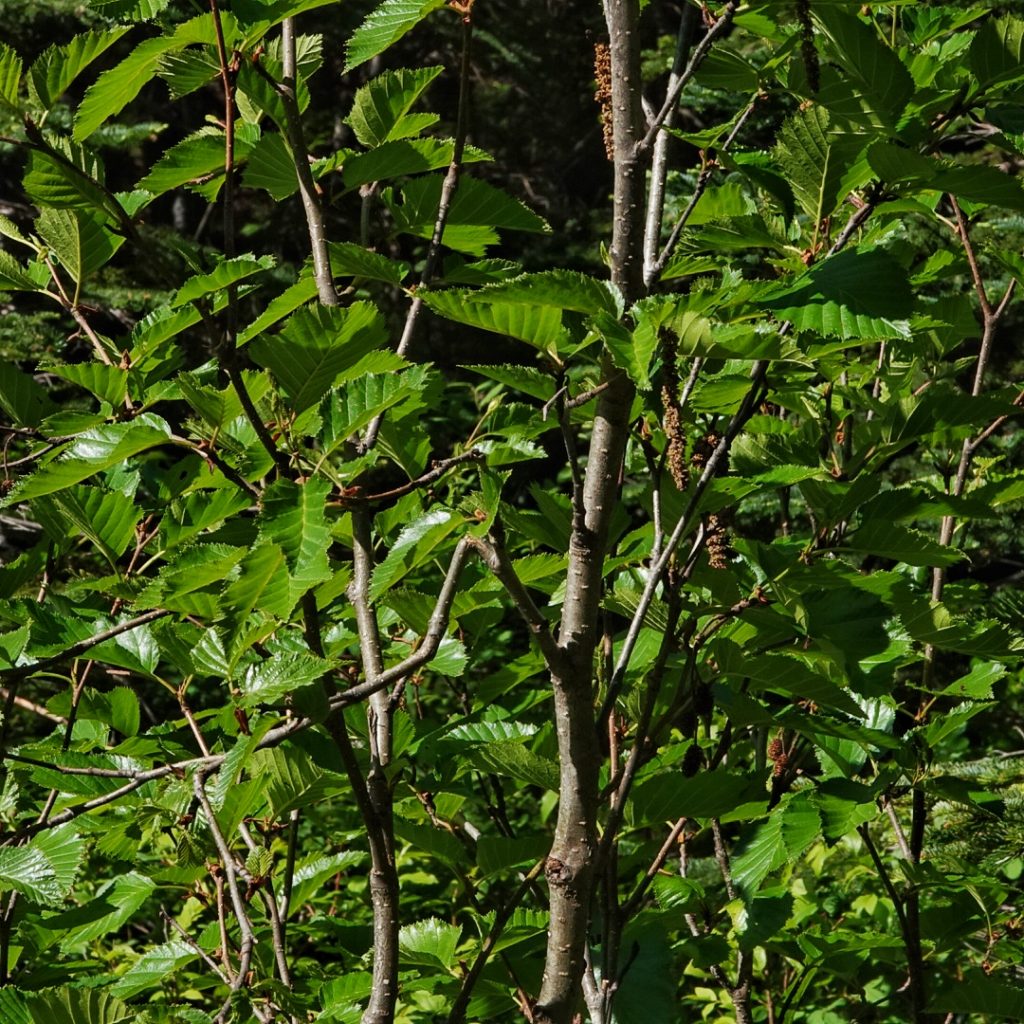
charming, diverse and graceful habit. needs to be used more.
I agree!